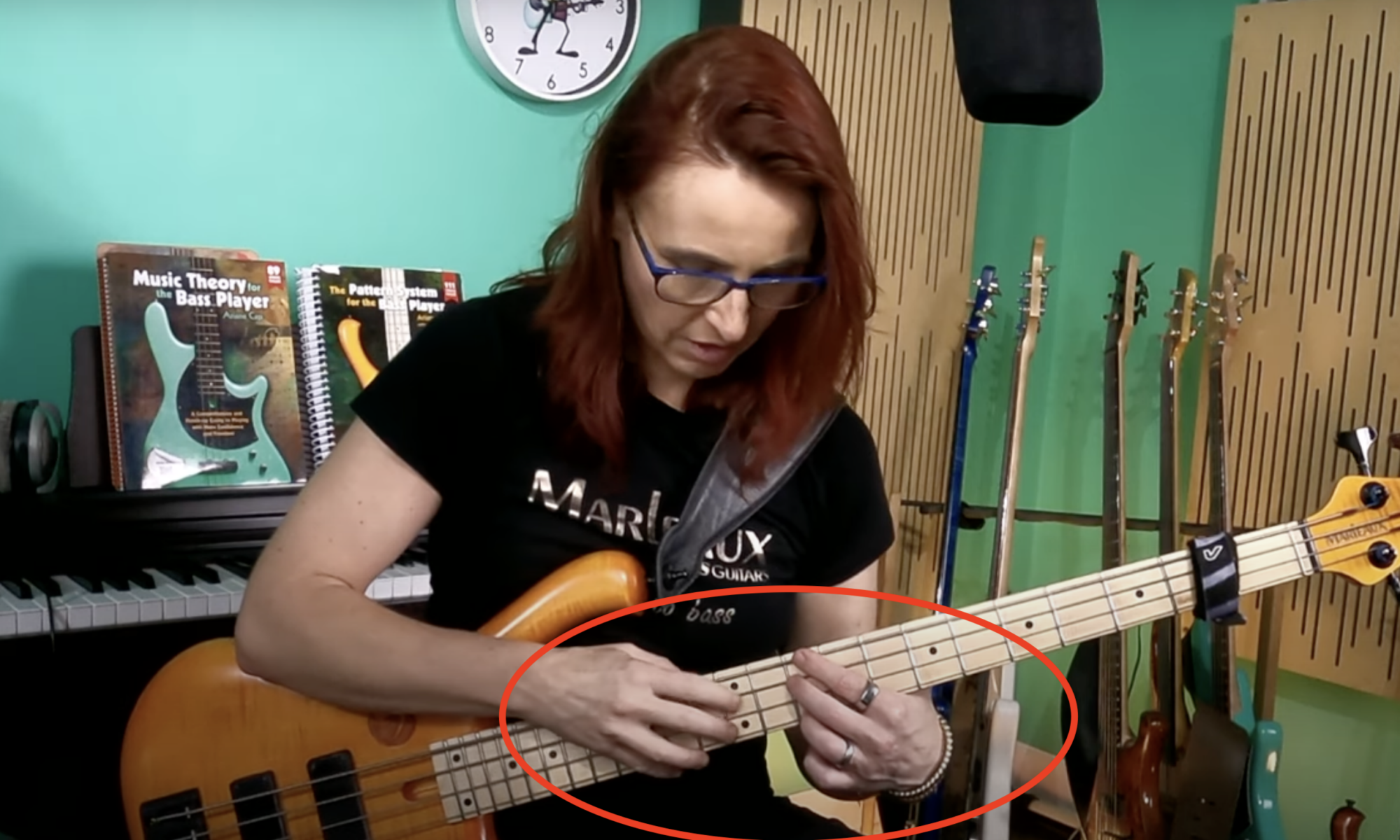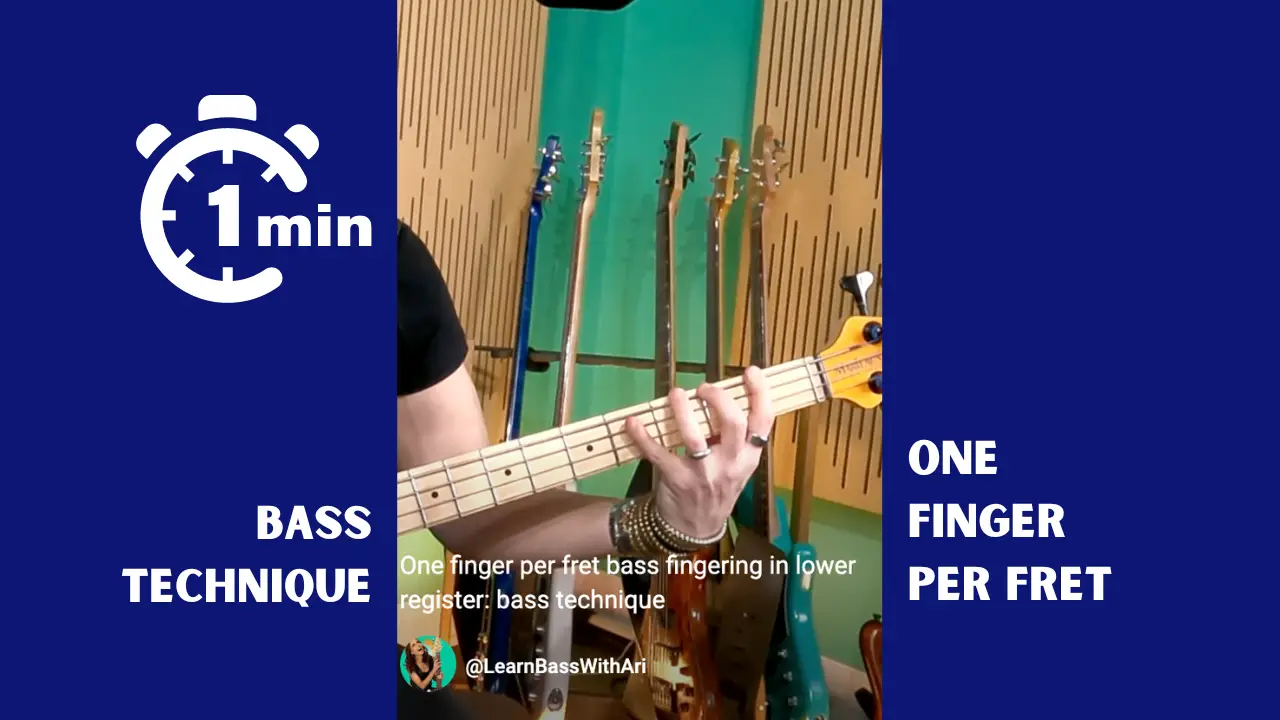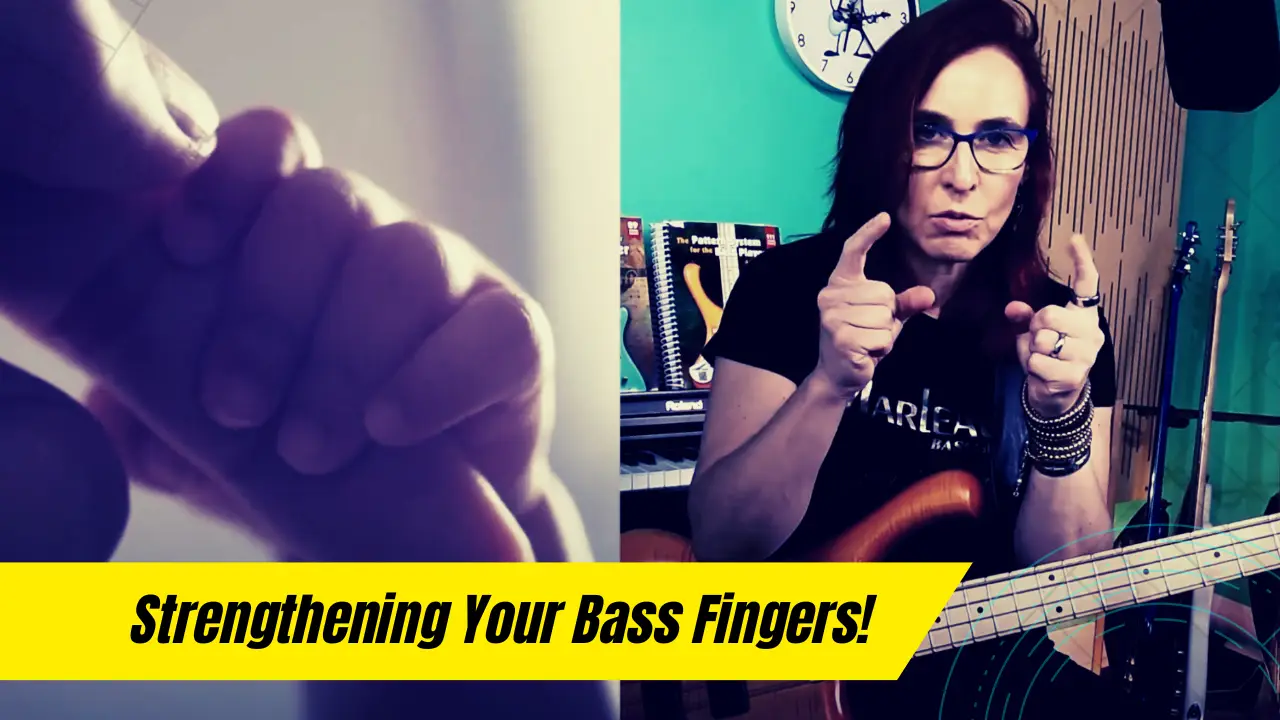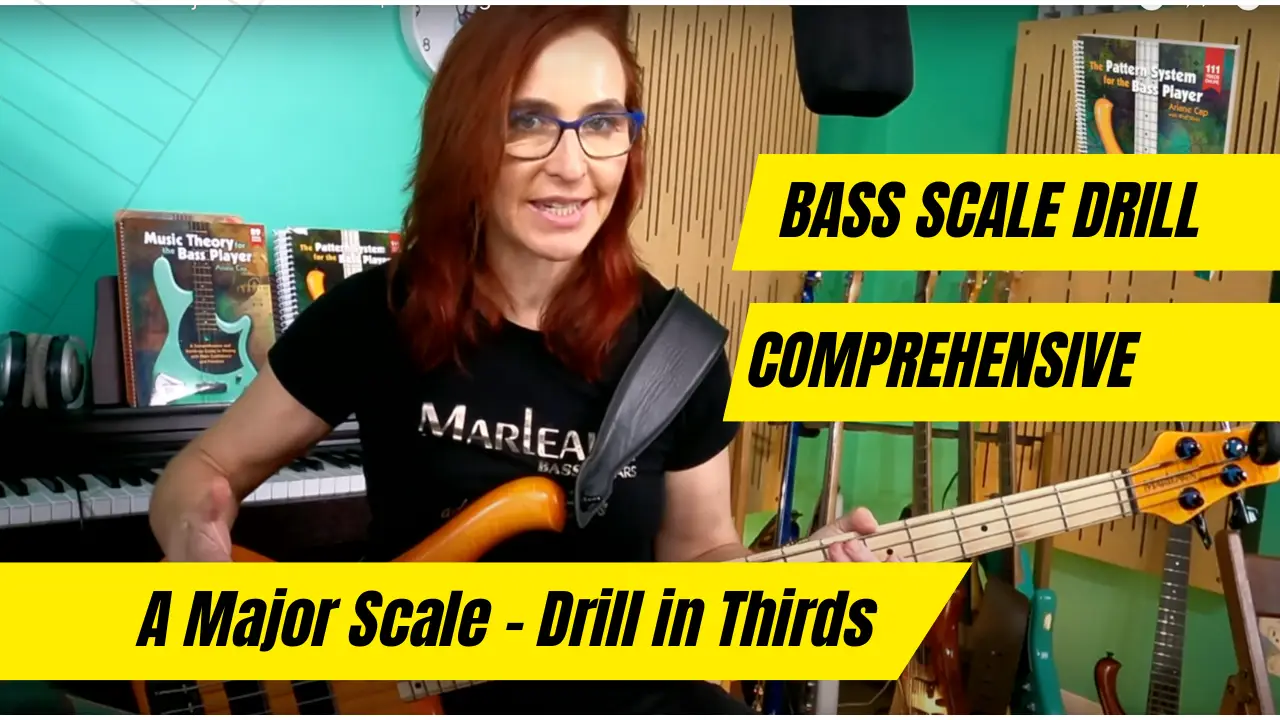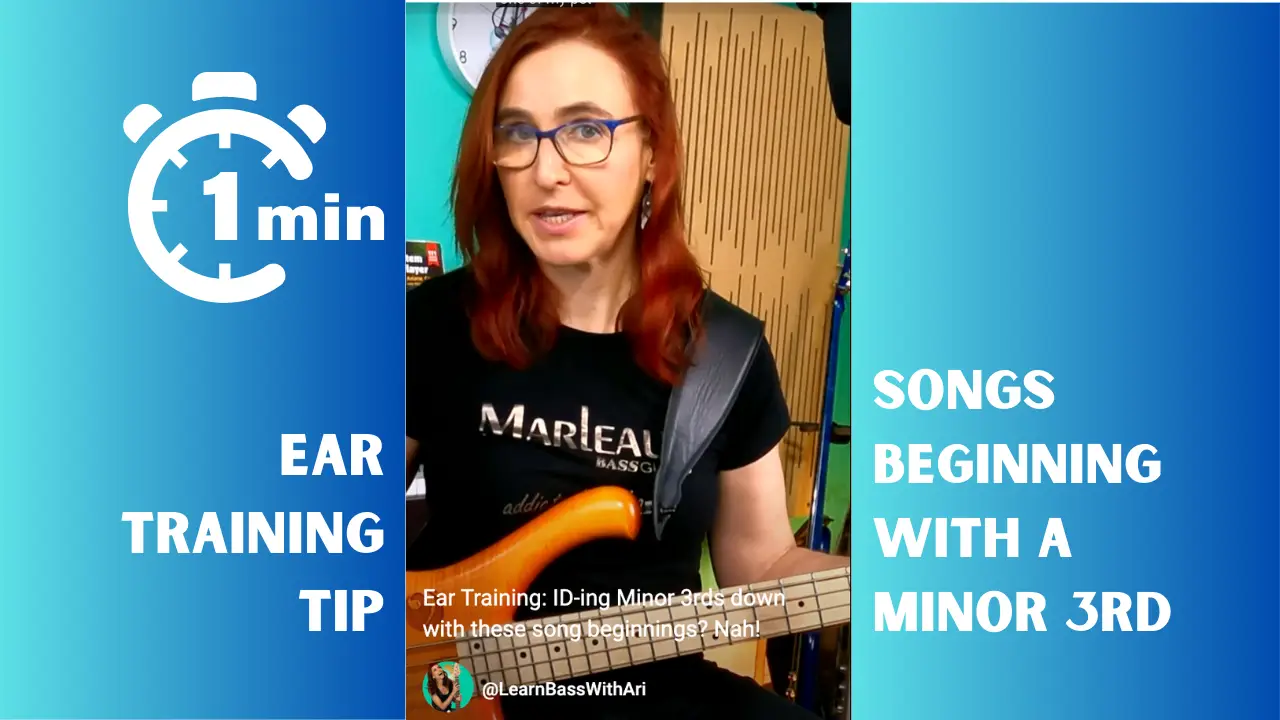Here are a few ideas to get you started tapping chords on the bass.
A29
Two-Handed Tapping on the bass: Get started with Chords
Video Transcript
Want to try some chords, tapping style?
Here’s a good way in. Groove gear fret wrap engaged. One hand has the root and the tenth. A tenth is a third up the octave. This is major [ 🎵 Ari plays example 🎵 ] and this is minor [ 🎵 Ari plays example 🎵 ]
Good fingers for that are one and four for the major and one and three for the minor but other possibilities exist. The other hand – fifth and octave. Root 5 8 10. You can let them ring – or lift them.
And it gets cool when you start coming up with a cool pattern. Here’s a good one to get started: [ 🎵 Ari plays example 🎵 } Just up and down one two three four five six seven and then wait.
Or you can do one two three four five six seven eight and then repeat lower. [ 🎵 Ari plays example 🎵 ] Get the motion started with the metronome and get comfortable. You can play them all in order [ 🎵 Ari plays example 🎵 ] or you can break them up.
Come up with a cool pattern. [ 🎵 Ari plays example 🎵 ] Make it speak. Focus on speed when you attack that string. Lower action and thinner strings are helpful. Chord progressions
[ 🎵 Ari plays example of all major chords 🎵 ]
[ 🎵 Ari plays example of major and minor chords 🎵 ]

